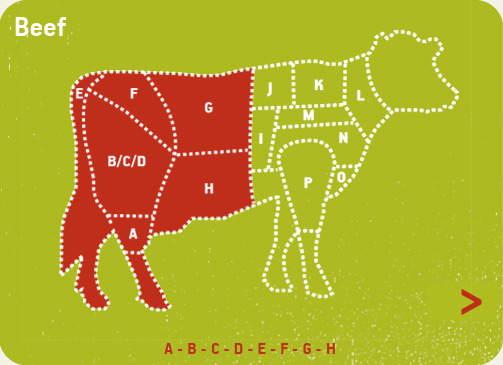Nutritional benefits
of grass-fed beef
- A good source of protein – essential for growth, muscle repair and the regulation of body functions
- A good source of all B vitamins, particularly B12. B12 is necessary for the formation of red blood cells and nerves. B12 is better absorbed from animal foods than plant food
- One of the best sources of the most absorbable forms of Iron – heme iron. Iron is an essential mineral, particularly for women and teenage girls
- Grass fed beef in comparison with grain fed beef has a higher percentage of healthy fats such as omega-3 fatty acids and conjugated linoleic acid (CLA). These fats may help to reduce the risk of heart disease and certain cancers
All nutritional information provided by:
BALANCE, Nutritional and Lifestyle Advice.
Contact on: 086 1203460

B - Top Rump - Trimmed into strips for marinating, flash-frying or stir-frying. Mince for burgers.
C - Silverside - Cheap roasting joint. Slowly cooked for stewing or making a pot roast.
D - Topside - Good for quick marinating and stir-frying or cook roasting-joint slowly on low heat.
E - Oxtail - Minimum three hours slow simmering, a popular soup flavour.
F - Rump - Suitable for frying, grilling and barbecuing in thick slices. e.g. steak and chips or a steak sandwich.
G - Sirloin - One of the finest roasting joints. Can also be cut into steaks.
H - Hindquarter Flank - Boneless, cheap, fatty. Suitable for casseroles or stews.





